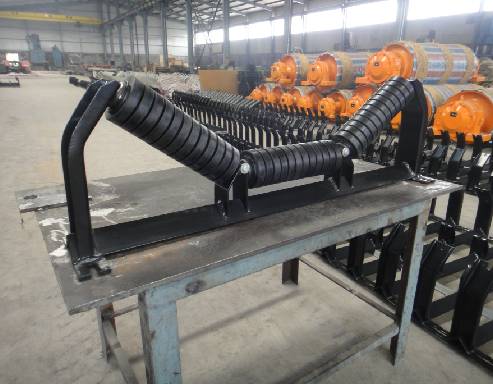 Afrikaans
Afrikaans  Albanian
Albanian  Amharic
Amharic  Arabic
Arabic  Armenian
Armenian  Azerbaijani
Azerbaijani  Basque
Basque  Belarusian
Belarusian  Bengali
Bengali  Bosnian
Bosnian  Bulgarian
Bulgarian  Catalan
Catalan  Cebuano
Cebuano  Corsican
Corsican  Croatian
Croatian  Czech
Czech  Danish
Danish  Dutch
Dutch  English
English  Esperanto
Esperanto  Estonian
Estonian  Finnish
Finnish  French
French  Frisian
Frisian  Galician
Galician  Georgian
Georgian  German
German  Greek
Greek  Gujarati
Gujarati  Haitian Creole
Haitian Creole  hausa
hausa  hawaiian
hawaiian  Hebrew
Hebrew  Hindi
Hindi  Miao
Miao  Hungarian
Hungarian  Icelandic
Icelandic  igbo
igbo  Indonesian
Indonesian  irish
irish  Italian
Italian  Japanese
Japanese  Javanese
Javanese  Kannada
Kannada  kazakh
kazakh  Khmer
Khmer  Rwandese
Rwandese  Korean
Korean  Kurdish
Kurdish  Kyrgyz
Kyrgyz  Lao
Lao  Latin
Latin  Latvian
Latvian  Lithuanian
Lithuanian  Luxembourgish
Luxembourgish  Macedonian
Macedonian  Malgashi
Malgashi  Malay
Malay  Malayalam
Malayalam  Maltese
Maltese  Maori
Maori  Marathi
Marathi  Mongolian
Mongolian  Myanmar
Myanmar  Nepali
Nepali  Norwegian
Norwegian  Norwegian
Norwegian  Occitan
Occitan  Pashto
Pashto  Persian
Persian  Polish
Polish  Portuguese
Portuguese  Punjabi
Punjabi  Romanian
Romanian  Russian
Russian  Samoan
Samoan  Scottish Gaelic
Scottish Gaelic  Serbian
Serbian  Sesotho
Sesotho  Shona
Shona  Sindhi
Sindhi  Sinhala
Sinhala  Slovak
Slovak  Slovenian
Slovenian  Somali
Somali  Spanish
Spanish  Sundanese
Sundanese  Swahili
Swahili  Swedish
Swedish  Tagalog
Tagalog  Tajik
Tajik  Tamil
Tamil  Tatar
Tatar  Telugu
Telugu  Thai
Thai  Turkish
Turkish  Turkmen
Turkmen  Ukrainian
Ukrainian  Urdu
Urdu  Uighur
Uighur  Uzbek
Uzbek  Vietnamese
Vietnamese  Welsh
Welsh  Bantu
Bantu  Yiddish
Yiddish  Yoruba
Yoruba  Zulu
Zulu Understanding the Mechanics of Drive Belts and Pulleys for Efficient Power Transmission
Drive Belts and Pulleys An Integral Part of Mechanical Systems
Drive belts and pulleys are fundamental components in various mechanical systems, playing a crucial role in power transmission and motion. Their utilization spans multiple industries, from automotive to manufacturing, where efficiency and reliability are paramount.
At its core, a drive belt is a flexible loop designed to connect and transmit rotational motion between two or more pulleys. These belts are typically made from materials such as rubber, polyurethane, or leather, which can withstand significant tension and friction while providing adequate grip. The choice of material often depends on specific application requirements, such as temperature resistance, durability, and flexibility.
Pulleys, on the other hand, are wheel-like devices with a groove along their circumference that allows the drive belt to sit snugly within it. Pulleys can be classified into different types fixed, adjustable, or movable. They can also vary in size and shape, which influences the mechanical advantage and speed ratio in a system. For instance, larger pulleys can reduce the speed of rotation while increasing torque, making them ideal for applications requiring high power.
One of the primary advantages of using drive belts and pulleys is the ability to transfer power over distances and between various components without the need for direct coupling. This flexibility allows for a modular design in machinery, making it easier to configure and maintain. Moreover, the soft material of drive belts helps absorb shocks and vibrations, protecting sensitive components from damage.
drive belts and pulleys

However, drive belts and pulleys require regular maintenance to ensure optimal performance. Over time, belts may stretch, wear, or crack, which leads to slippage and decreased efficiency. Periodic inspections and timely replacements are essential to avoid breakdowns and maintain operational integrity. Additionally, proper tensioning of the drive belt is vital; if the tension is too loose, it can slip, and if too tight, it can cause excessive wear on both the belt and the pulleys.
In automotive applications, drive belts are often involved in crucial systems such as the alternator, water pump, and air conditioning. The serpentine belt, a single continuous belt that drives multiple components, is a common sight in modern vehicles. Its design allows for a compact engine layout while ensuring that all driven accessories operate smoothly.
In industrial settings, drive belts and pulleys are used in conveyor systems, textile machinery, and even elevators. The versatility of these components means they can be tailored to meet specific load requirements and operational speeds. The use of variable-speed pulleys also allows for greater control over output and efficiency, adapting to different operational demands.
In conclusion, drive belts and pulleys are indispensable elements of mechanical systems, providing efficient power transmission and enhancing the functionality of various machines. Their adaptability, coupled with the need for regular maintenance, makes them a vital topic in engineering and mechanical design. As industries continue to evolve, advancements in materials and design will likely lead to even more innovative applications of drive belts and pulleys, further emphasizing their importance in modern technology.
-
Revolutionizing Conveyor Reliability with Advanced Rubber Lagging PulleysNewsJul.22,2025
-
Powering Precision and Durability with Expert Manufacturers of Conveyor ComponentsNewsJul.22,2025
-
Optimizing Conveyor Systems with Advanced Conveyor AccessoriesNewsJul.22,2025
-
Maximize Conveyor Efficiency with Quality Conveyor Idler PulleysNewsJul.22,2025
-
Future-Proof Your Conveyor System with High-Performance Polyurethane RollerNewsJul.22,2025
-
Driving Efficiency Forward with Quality Idlers and RollersNewsJul.22,2025





























